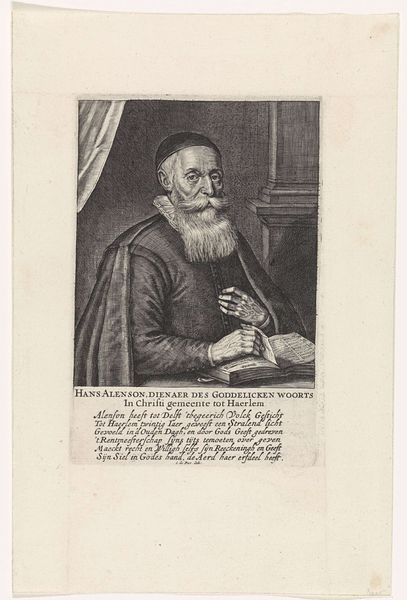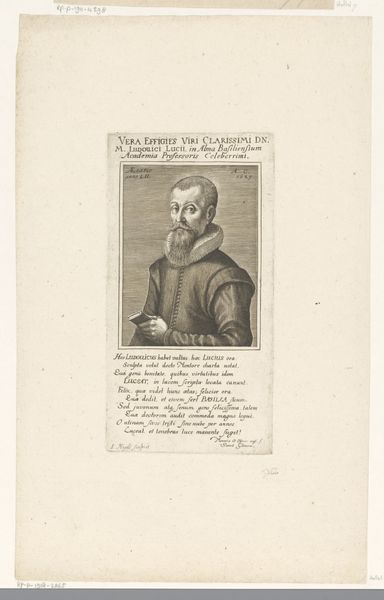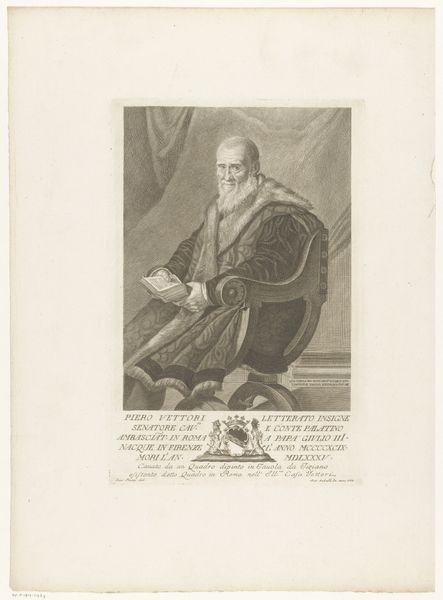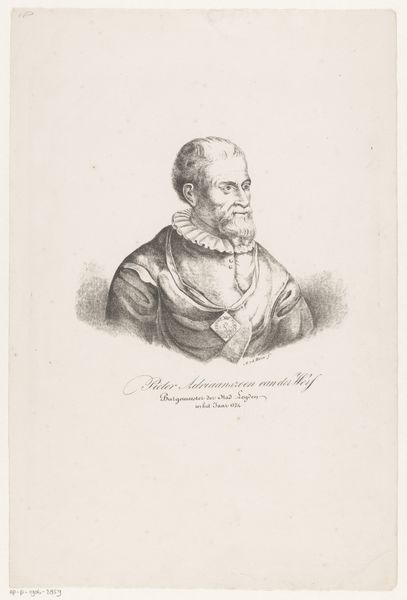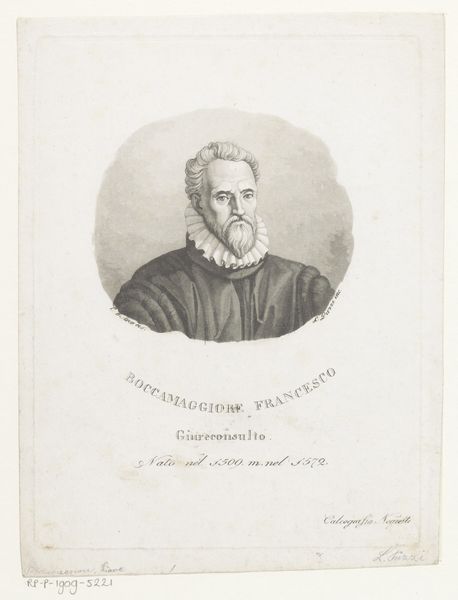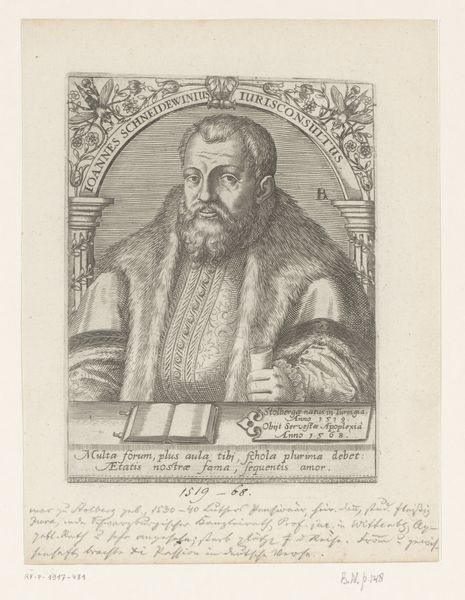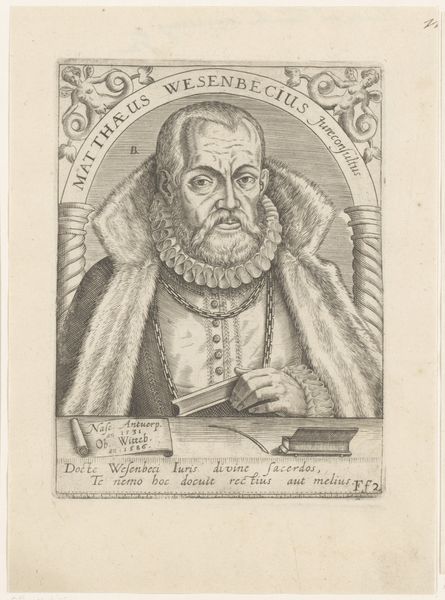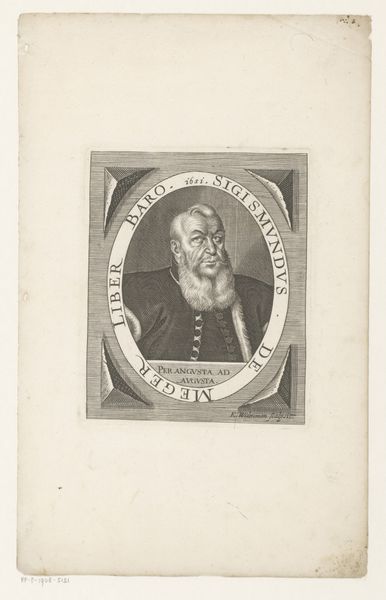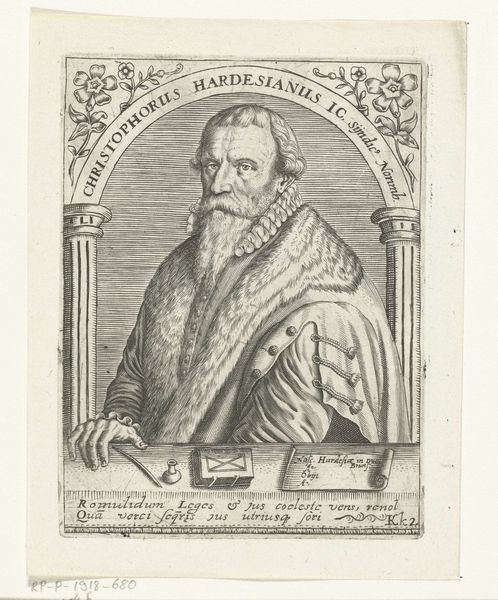
print, engraving
#
portrait
#
baroque
# print
#
old engraving style
#
history-painting
#
engraving
Dimensions: height mm, width mm
Copyright: Rijks Museum: Open Domain
Editor: So, this is Hendrik Causé's "Portret van de sterrenkundige Godefridus Wendelinus," an engraving made after 1667. It gives me a rather serious, contemplative vibe – a deep dive into a scholar’s world. What's your initial impression? Curator: Contemplative is a wonderful word for it! When I look at Wendelinus, I don’t just see an astronomer staring back. The very lines of the engraving seem to trace the wrinkles etched by thought itself. Do you notice how the starkness of the engraving emphasizes the contrast between light and shadow, creating a sense of drama, even in such a small, contained format? It almost feels like the light of a distant star illuminating his face. Editor: Yes, it’s almost theatrical. Did Baroque portraiture commonly lean into this level of emotional intensity? Curator: Absolutely. This period was all about grandeur, drama, and emotional expression. Think about it: science was making huge leaps then. It was an exciting and unsettling time. The way Causé captures Wendelinus suggests he's not just documenting a likeness, but capturing a bit of the spirit of the age, its intense intellectual ferment. What do you make of the inscription below the portrait? Editor: It seems straightforward, giving his title and year of death... but in Latin, lending some historical weight. Curator: Exactly. It’s a formal declaration, solidifying Wendelinus's place in history. Think of it as a mini-monument, encapsulating his life and accomplishments in ink. This has been a real eye-opener, I now understand that it’s less about the individual and more about immortalizing the achievements. Editor: I agree. Looking at it through the lens of "immortalizing achievement," I noticed the intensity of Wendelinus' gaze more clearly now. Thank you.
Comments
No comments
Be the first to comment and join the conversation on the ultimate creative platform.


